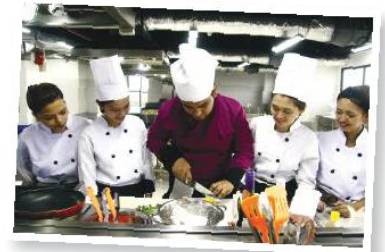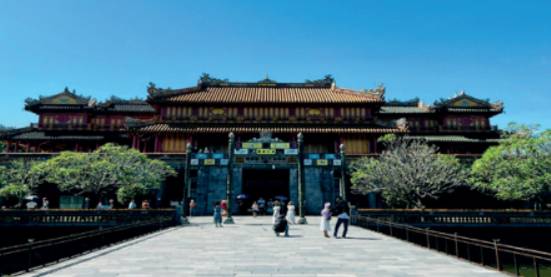Hãy nhập câu hỏi của bạn vào đây, nếu là tài khoản VIP, bạn sẽ được ưu tiên trả lời.

There have been efforts in Vietnam to protect and restore ecosystems, such as the Green Annamites Project, which aims to protect the forest ecosystem and biodiversity in the Annamites mountain range. In addition, there are initiatives to restore mangrove forests in the Mekong Delta and protect coral reefs in Nha Trang Bay.
Regarding the applicability of the ideas in the text to Vietnam, it depends on the specific context and conditions in Vietnam. The Great Green Wall project, for example, is focused on restoring degraded land in Africa, which may not be directly applicable to Vietnam. However, the idea of ecosystem restoration and protection is relevant to any country, and the principles and strategies used in these projects could be adapted and applied to Vietnam's unique ecological challenges. For example, efforts to protect and restore marine ecosystems like the Belize Barrier Reef could be relevant to Vietnam's extensive coastal areas and rich marine biodiversity. Overall, it would require careful consideration and adaptation to make these ideas applicable to Vietnam.
Tạm dịch:
Việt Nam đã có những nỗ lực bảo vệ và phục hồi các hệ sinh thái, chẳng hạn như Dự án Trường Sơn Xanh nhằm bảo vệ hệ sinh thái rừng và đa dạng sinh học ở dãy Trường Sơn. Ngoài ra, còn có các sáng kiến khôi phục rừng ngập mặn ở ĐBSCL và bảo vệ rạn san hô ở vịnh Nha Trang.
Về khả năng áp dụng các ý trong văn bản vào Việt Nam thì tùy thuộc vào bối cảnh và điều kiện cụ thể ở Việt Nam. Ví dụ, dự án Bức tường xanh vĩ đại tập trung vào việc khôi phục đất bị suy thoái ở Châu Phi, điều này có thể không áp dụng trực tiếp cho Việt Nam. Tuy nhiên, ý tưởng phục hồi và bảo vệ hệ sinh thái phù hợp với bất kỳ quốc gia nào, và các nguyên tắc cũng như chiến lược được sử dụng trong các dự án này có thể được điều chỉnh và áp dụng cho các thách thức sinh thái đặc thù của Việt Nam. Ví dụ, những nỗ lực bảo vệ và phục hồi các hệ sinh thái biển như Rạn san hô Chắn bờ Belize có thể phù hợp với các vùng ven biển rộng lớn và đa dạng sinh học biển phong phú của Việt Nam. Nhìn chung, cần phải xem xét và điều chỉnh cẩn thận để những ý tưởng này có thể áp dụng cho Việt Nam.

Vietnam has several methods of preserving heritage. One of the most common methods is through government funding. The government invests money in preserving heritage sites and objects, and it has been successful in many cases. Another way is through public-private partnerships, where companies provide funding for heritage preservation in exchange for advertising or other benefits.
Vietnam has also used UNESCO funding for the preservation of its cultural heritage. Additionally, the country has implemented strict heritage laws to protect its heritage sites and objects. For example, in 2016, Vietnam passed a law on cultural heritage, which regulates the protection, preservation, and promotion of the country's heritage.
As for which method works best in Vietnam, it depends on the specific context and situation. Each method has its advantages and disadvantages, and a combination of different methods may be the most effective way to preserve heritage in Vietnam.

A list of characteristics of independent learners for discussion purposes:
Self-motivated: Independent learners are motivated by their own interests and goals, not just external rewards or pressures.
Self-directed: They take responsibility for their own learning and actively seek out resources and opportunities to improve their knowledge and skills.
Self-aware: They understand their own strengths and weaknesses, learning style, and preferences, and use that knowledge to guide their learning process.
Goal-oriented: They set clear and specific learning goals and regularly assess their progress toward achieving them.
Persistent: They persevere through challenges and setbacks and keep working toward their goals.
Reflective: They regularly reflect on their learning experiences and use that feedback to improve their learning strategies.
Resourceful: They know how to find and use a variety of learning resources, including books, online courses, mentors, and peers.
Curious: They have a strong desire to learn and explore new ideas and topics.
Creative: They think outside the box and find innovative ways to solve problems and achieve their goals.
Collaborative: They work well with others and are open to learning from different perspectives and experiences.

Human is the direct factor that causes global warming and makes this phenomenon more and more serious. The reason is because the increase in CO2 content is mainly due to human activities, such as fuel burning, the reduction in agricultural land use, especially after the industrial revolution.
Helping limited global warming, we should:
1. Drive less
Walk, bike, carpool or take mass transit more often. You'll save one pound of carbon dioxide for every mile you don't drive!
2. Avoid products with a lot of packaging
You can save 1,200 pounds of carbon dioxide if you reduce your garbage by 10 percent.
3. Plant more trees
A single tree will absorb one ton of carbon dioxide over its lifetime.
4. Turn off electronic devices
Simply turning off your television, DVD player, stereo, and computer, when you're not using them, will save you thousands of pounds of carbon dioxide a year.

The text mentions three essential skills required for teenagers to become independent, which are decision-making skills, time-management skills, and life skills.
Apart from the skills mentioned in the text, some other skills teenagers need to become independent include communication skills, problem-solving skills, financial management skills, goal-setting skills, and critical thinking skills. Also, teenagers need to learn how to be emotionally intelligent and how to develop positive relationships with others.

1. Based on the context of the picture, it seems like the students are taking a vocational course in cooking or culinary arts.
2. It's possible that students may need certain qualifications or prerequisites to apply for this course, such as a high school diploma or previous experience in cooking. However, it ultimately depends on the specific requirements of the course and the institution offering it.
3. Students in this course likely expect to learn various cooking techniques and recipes, as well as gain a deeper understanding of the culinary arts. They may also learn about food safety, kitchen hygiene, and restaurant management if the course covers those topics. Additionally, students may hope to gain hands-on experience in cooking and receive feedback on their dishes from their instructor. Overall, the goal of this course is likely to help students develop their skills and knowledge in the culinary field.

Bài tham khảo
- I think rap artists are the best poets these days because they are able to convey powerful messages through their lyrics and use poetic devices such as alliteration, metaphor, and rhyme to create memorable verses.
(Tôi nghĩ các nghệ sĩ nhạc rap ngày nay là những nhà thơ giỏi nhất vì họ có thể truyền tải những thông điệp mạnh mẽ thông qua lời bài hát của họ và sử dụng các biện pháp thi ca như ám chỉ, ẩn dụ và gieo vần để tạo ra những câu thơ đáng nhớ.)
- I think writing poems for greeting cards would be a good job because it allows one to express creativity, play with words, and bring joy and comfort to others.
(Tôi nghĩ viết thơ cho thiệp chúc mừng sẽ là một công việc tốt vì nó cho phép một người thể hiện sự sáng tạo, chơi chữ và mang lại niềm vui và sự thoải mái cho người khác.)
- I think a good poem has to rhyme and make sense because it demonstrates the poet's mastery of language, structure, and meaning, and appeals to the reader's aesthetic and intellectual senses.
(Tôi nghĩ một bài thơ hay phải có vần điệu và có ý nghĩa vì nó thể hiện sự tinh thông về ngôn ngữ, cấu trúc và ý nghĩa của nhà thơ, đồng thời thu hút các giác quan thẩm mỹ và trí tuệ của người đọc.)
- I think learning poems by heart is a waste of time because it is an outdated and impractical form of education that does not enhance one's critical thinking, creativity, or career prospects.
(Tôi nghĩ học thuộc lòng các bài thơ là lãng phí thời gian bởi vì nó là một hình thức giáo dục lỗi thời và không thực tế, không nâng cao tư duy phản biện, khả năng sáng tạo hoặc triển vọng nghề nghiệp của một người.)

1. I haven’ visited any castles or palaces in VietNam before. However, I know some of the most famous ones such as Hue Imperial Citadel, the Thang Long Imperial Citadel, and the Ho Dynasty Citadel. These historical sites are significant because they showcase the country's rich history and cultural heritage.
(Tôi chưa từng đến thăm bất kỳ lâu đài hay cung điện nào ở Việt Nam trước đây. Tuy nhiên, tôi biết một số địa điểm nổi tiếng nhất như Cố đô Huế, Hoàng thành Thăng Long và Thành nhà Hồ. Những di tích lịch sử này rất có ý nghĩa vì chúng thể hiện di sản văn hóa và lịch sử phong phú của đất nước.)
2. I haven’t seen this palace before, but I guess it is the Hue Imperial Citadel.
(Tôi chưa nhìn thấy cung điện này bao giờ, nhưng tôi đoán đó là Hoàng thành Huế.)



Tham khảo:
There are several farming activities in Vietnam that can have a negative impact on the global temperature, including:
1. Rice cultivation: Rice cultivation is a major source of greenhouse gas emissions, primarily due to the production of methane during the decomposition of organic matter in flooded rice paddies.
2. Livestock production: Livestock production, particularly from cattle and buffalo, is a significant contributor to greenhouse gas emissions through the production of methane from enteric fermentation and manure management.
3. Pesticide use: Pesticide use in agriculture can lead to the emission of greenhouse gases, particularly nitrous oxide, as well as contribute to soil degradation.
4. Deforestation: Deforestation for agriculture, particularly for expanding rice paddies or livestock grazing areas, can contribute to the release of carbon dioxide into the atmosphere.
To address these negative impacts, some alternatives that can be considered include:
1. Sustainable rice cultivation: Alternative rice cultivation methods, such as aerobic rice cultivation or the use of alternate wetting and drying methods, can significantly reduce methane emissions from rice paddies.
2. Improved livestock management: Improved livestock management practices, such as better feeding and manure management, can reduce the emissions of methane and other greenhouse gases.
3. Organic farming: Organic farming practices, including the use of natural pest control methods and composting, can reduce the use of pesticides and fertilizers, as well as promote soil health.
4. Forest conservation and reforestation: Conservation and reforestation efforts can help to reduce the release of carbon dioxide from deforestation and promote carbon sequestration in new forest areas.
Overall, a shift towards sustainable agriculture practices and land use management can help to mitigate the negative impacts of farming activities on the global temperature.